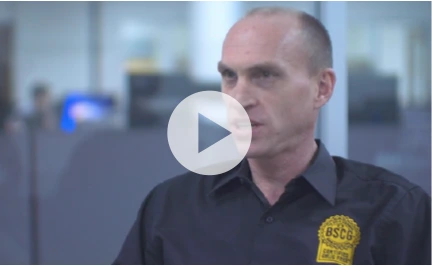
THE GOLD STANDARD IN THIRD-PARTY CERTIFICATION AND TESTING : +1-800-920-6605, info@bscg.org
The intersection of sports and supplements is a critical area where athlete health, performance, and integrity are continuously balanced. Ensuring the safety of supplements and the rigor of sports drug testing is paramount in maintaining fair competition and athlete well-being. This content explores the role of leaders in supplement safety and sports drug testing, highlighting key guidelines, policies, and the latest innovations in the field.
Athletes often rely on supplements to enhance performance, recovery, and overall health. However, the supplement industry is fraught with risks, including contamination and the presence of banned substances. Leaders in supplement safety set stringent guidelines to protect athletes from these risks, ensuring that products are safe, effective, and free from prohibited substances.
Certification programs play a crucial role in supplement safety. Organizations like the Banned Substances Control Group (BSCG) provide rigorous testing and certification for dietary supplements, guaranteeing that they meet high safety standards. Such certifications help athletes make informed choices and avoid inadvertently consuming banned substances.
Fair competition is the cornerstone of sports. Effective sports drug testing policies ensure that all athletes compete on an equal footing, free from the advantages of performance-enhancing drugs (PEDs). Leading organizations in this field develop comprehensive testing protocols that detect a wide range of substances, including steroids, stimulants, and other PEDs.
Technological advancements have significantly improved the accuracy and efficiency of sports drug testing. Innovations such as biological passport programs, advanced mass spectrometry, and genetic testing are pushing the boundaries of what is possible in detecting drug use. Leaders in sports drug testing continuously adopt these technologies to stay ahead of potential cheaters.
Effective anti-doping measures involve comprehensive testing programs that include both in-competition and out-of-competition testing. Randomized testing and the use of biological passports help monitor athletes over time, providing a more detailed picture of their physiological profiles and potential doping activities.
Education is a vital component of anti-doping efforts. Athletes, coaches, and support staff must be aware of the risks and consequences of doping. Leading organizations conduct extensive educational programs to inform stakeholders about banned substances, safe supplement use, and the importance of clean sport.
Performance-enhancing drug testing focuses on detecting substances that can unfairly boost athletic performance. These include anabolic steroids, human growth hormone (HGH), erythropoietin (EPO), and various stimulants. Leaders in this field employ sophisticated testing methods to identify these substances at very low concentrations, ensuring that even the slightest use is detected.
Collaboration among various sports organizations, national anti-doping agencies, and international bodies is essential for effective performance-enhancing drug testing. Sharing data, best practices, and resources enhances the overall effectiveness of anti-doping measures worldwide.
Third-party testing is a critical component of sports supplement certification. Independent organizations like BSCG conduct thorough testing to verify that supplements are free from banned substances and contaminants. This independent verification adds an extra layer of trust for athletes and consumers.
Transparency and accountability are key principles in sports supplement certification. Leaders in this field provide detailed information about their testing processes, results, and certification criteria. This openness helps build trust and confidence in the safety and efficacy of certified supplements.
Educating athletes on safe supplement use is essential to prevent accidental ingestion of banned substances. Leaders in supplement safety develop educational materials and programs that guide athletes on how to choose, use, and verify supplements effectively.
Ongoing monitoring and compliance checks ensure that supplements remain safe and free from contamination. Regular testing and audits of manufacturing facilities and processes help maintain high safety standards and prevent lapses that could jeopardize athlete health.
Professional sports leagues and organizations implement stringent drug testing protocols to uphold the integrity of their competitions. These protocols include regular, random, and targeted testing to ensure that all athletes adhere to anti-doping rules.
Handling violations is a critical aspect of drug testing in professional sports. Clear policies and procedures for addressing positive tests, including sanctions and rehabilitation programs, help maintain fairness and deter future violations.
Customized testing plans are tailored to the specific needs of different sports and athlete populations. These plans consider factors such as the sport’s demands, the level of competition, and the athletes' physiological profiles to ensure effective and efficient testing.
Integrating technology into athletic drug testing programs enhances their accuracy and effectiveness. Advanced analytical techniques, data analytics, and real-time monitoring systems help detect and deter doping more effectively.
Developing robust supplement safety standards involves collaboration between regulatory bodies, industry leaders, and scientific experts. These standards set the benchmarks for manufacturing, testing, and labeling supplements to ensure their safety and efficacy.
Continuous improvement is essential in maintaining high supplement safety standards. Regular reviews and updates of safety guidelines, testing methods, and certification criteria help address emerging risks and challenges in the supplement industry.
Upholding sports integrity is the ultimate goal of drug testing and supplement safety initiatives. Ensuring that athletes compete fairly and without the use of banned substances maintains the credibility and honor of sports.
Building a culture of clean sport requires the collective effort of athletes, coaches, organizations, and fans. Leaders in this field foster this culture through education, stringent testing, and unwavering commitment to ethical practices.
Comprehensive banned substance lists are essential tools in the fight against doping. These lists, maintained by organizations like the World Anti-Doping Agency (WADA), detail the substances and methods prohibited in sports, providing clear guidelines for athletes and support personnel.
Regular updates and revisions of banned substance lists ensure they remain relevant and effective. Emerging substances and methods are continually evaluated and added to the lists as needed, reflecting the latest scientific knowledge and doping trends.
Prioritizing athlete health is a core principle of supplement safety and drug testing initiatives. Ensuring that athletes have access to safe, effective supplements and compete in a drug-free environment protects their physical and mental well-being.
Collaborative healthcare approaches involving sports physicians, nutritionists, and anti-doping experts help provide comprehensive support to athletes. These multidisciplinary teams work together to optimize athlete health, performance, and compliance with anti-doping regulations.
Regulatory frameworks for sports supplements vary by country and region, but they all aim to ensure product safety and efficacy. Leaders in this field advocate for harmonized regulations that provide clear, consistent guidelines for manufacturers and consumers.
Industry responsibility is crucial in maintaining high standards for sports supplements. Manufacturers must adhere to regulatory requirements, invest in quality control, and seek third-party certifications to demonstrate their commitment to safety.
Promoting clean competition is the driving force behind drug-free sports initiatives. These initiatives encompass a range of activities, from rigorous drug testing and anti-doping education to advocacy and support for clean athletes.
Global collaboration is essential for the success of drug-free sports initiatives. International partnerships and cooperative efforts among sports organizations, governments, and anti-doping agencies help create a unified front against doping.
Leaders in supplement safety and sports drug testing play a pivotal role in maintaining the integrity, fairness, and health of sports. Through stringent guidelines, innovative testing methods, comprehensive educational programs, and global collaboration, they ensure that athletes can compete safely and fairly. By prioritizing supplement safety and robust drug testing policies, these leaders uphold the highest standards in sports, fostering a culture of clean competition and athlete well-being.



 YouTube Channel
YouTube Channel
Oliver Catlin Interview
 BSCG BLOG
BSCG BLOG
Tainted Supplements Still Causing NFL Doping Violations

 The Catlin Perspective blog widget
The Catlin Perspective blog widget
THE HISTORY OF BSCG